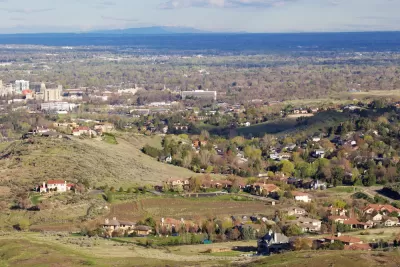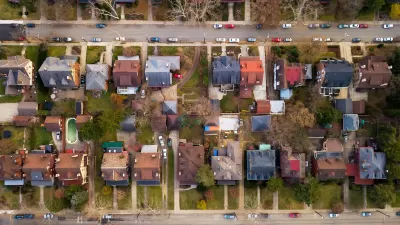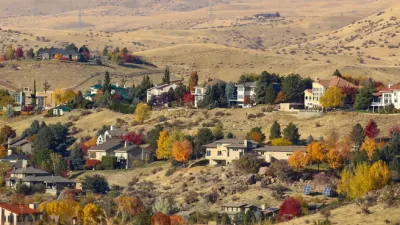Idaho cities can remove barriers to development, adjust zoning codes, and encourage the construction of accessory dwelling units and single-occupancy apartments to sustainably accommodate the state’s growing population.

As Idaho’s population—and housing costs—grow, Sarah Cunningham and Erin Sorensen, writing in the Idaho Capital Sun, outline a set of recommendations for creating more affordable housing. “Developers can and should be able to build the kind of housing that meets our community needs, and do so alongside the infrastructure – for example, public transit or proximity to commuter trails – we all benefit from.”
For Cunningham and Sorensen, “The solution to affordable housing is not to sprawl outward, which would make us become exactly like California and other states that people are desperate to leave. Rather, we need to think outside of the box to incorporate affordability from the beginning of the development process to prevent locals and the employees our business community needs from being priced out.”
Their recommendations to state and local leaders, developers, and residents concerned about affordability:
- Build more accessory dwelling units alongside single-family homes.
- Build single-occupancy apartments – and ditch the parking requirements.
- Encourage home sharing for senior homeowners.
- Demand 10% for affordability.
- Attend the city of Boise’s zoning code rewrite open houses.
Ultimately, the authors conclude, most individuals living alone don’t need big houses. But everyone needs “access to parks and nature, the ability to walk or bike to work, shopping, and entertainment safely, and a sense of belonging and connection in our neighborhoods.”
FULL STORY: Here are five things Idaho developers can do to create more affordable housing

Planetizen Federal Action Tracker
A weekly monitor of how Trump’s orders and actions are impacting planners and planning in America.

Restaurant Patios Were a Pandemic Win — Why Were They so Hard to Keep?
Social distancing requirements and changes in travel patterns prompted cities to pilot new uses for street and sidewalk space. Then it got complicated.

Map: Where Senate Republicans Want to Sell Your Public Lands
For public land advocates, the Senate Republicans’ proposal to sell millions of acres of public land in the West is “the biggest fight of their careers.”

Maui's Vacation Rental Debate Turns Ugly
Verbal attacks, misinformation campaigns and fistfights plague a high-stakes debate to convert thousands of vacation rentals into long-term housing.

San Francisco Suspends Traffic Calming Amidst Record Deaths
Citing “a challenging fiscal landscape,” the city will cease the program on the heels of 42 traffic deaths, including 24 pedestrians.

California Homeless Arrests, Citations Spike After Ruling
An investigation reveals that anti-homeless actions increased up to 500% after Grants Pass v. Johnson — even in cities claiming no policy change.
Urban Design for Planners 1: Software Tools
This six-course series explores essential urban design concepts using open source software and equips planners with the tools they need to participate fully in the urban design process.
Planning for Universal Design
Learn the tools for implementing Universal Design in planning regulations.
Heyer Gruel & Associates PA
JM Goldson LLC
Custer County Colorado
City of Camden Redevelopment Agency
City of Astoria
Transportation Research & Education Center (TREC) at Portland State University
Camden Redevelopment Agency
City of Claremont
Municipality of Princeton (NJ)





























